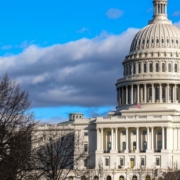A New $900 Billion COVID-19 Stimulus Package Passed By Congress Was Signed Into Law By President Trump on December 27, 2020
What’s most important about the legislation is what’s not in it. It does not extend the CARES Act provisions for coronavirus-related distributions (CRDs) beyond December 30, 2020 and does not extend the RMD waiver beyond 2020.
The new law does include retirement plan disaster relief for non-COVID-19 disaster declarations. The relief is the same as the disaster relief we have seen in prior legislation. Individuals affected by a declared disaster can take up to $100,000 of “qualified disaster distributions” annually from IRAs and company plans. The distributions would be exempt from the 10% early distribution penalty, taxable income could be spread ratably over three years, and the distribution could be repaid within three years.
The legislation also includes the same relief for plan loans made on account of a covered disaster that we saw in the CARES Act. The limit for plan loans is doubled to $100,000 (but no more than 100% of the vested account balance). In addition, loan repayments due in the 180-day period after the disaster can be suspended.
The stimulus package also permanently extends the 7.5% threshold for deductible medical expenses. (The SECURE Act had temporarily extended the 7.5% threshold for 2019 and 2020.) This means that the 10% early distribution penalty will not apply to IRA or plan withdrawals for medical expenses to the extent the expenses exceed 7.5% of adjusted gross income.

